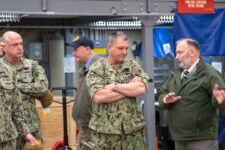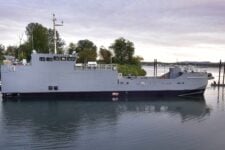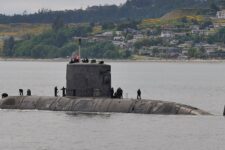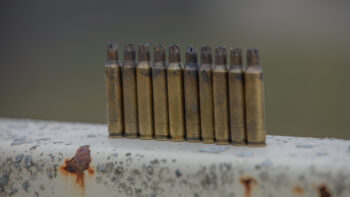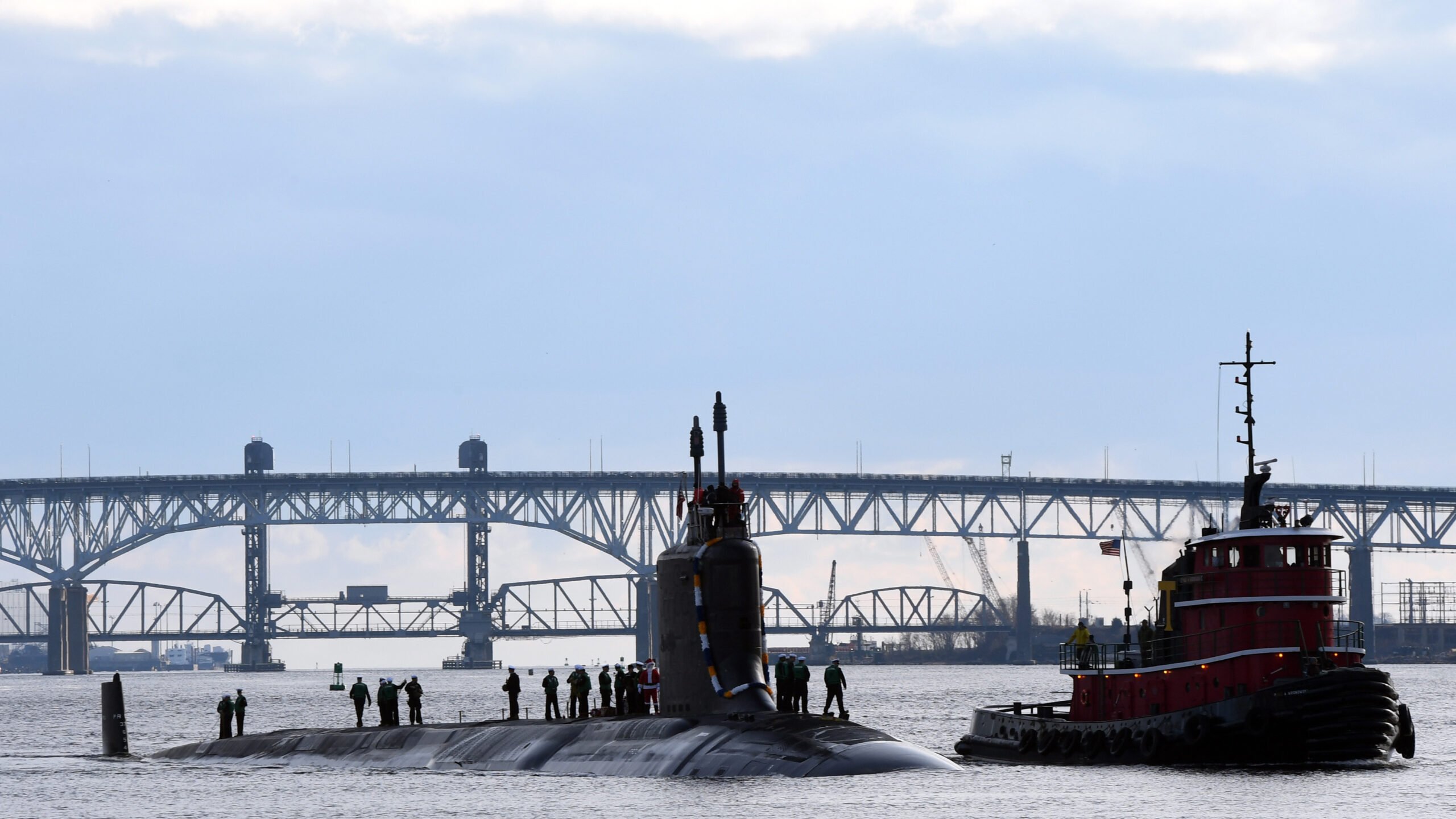
Virginia-class fast-attack submarine USS South Dakota (SSN 790) transits the Thames River during a homecoming event at Naval Submarine Base New London, Conn. ( Photo courtesy of US Navy)
WASHINGTON — Dozens of lawmakers are calling on House appropriators to ignore the Navy’s stated request to fund the construction of only one Virginia-class submarine this fiscal year and include enough money to continue the previously planned cadence of two boats per year.
“The proposal to request one attack submarine is contrary to the Department of Defense’s National Defense Industrial Strategy, which cites procurement instability as a systemic challenge,” according to the letter published today and signed by 120 lawmakers, including Reps. Joe Courtney, D-Conn., and Trent Kelly, R-Miss., the top members on the House Armed Services Seapower and Projection Forces subcommittee. Courtney’s office provided a copy of the letter to Breaking Defense.
“This proposal is also an alarming deviation from the Virginia-class procurement profile in the [fiscal year] 2024 future years defense plan and 30-year shipbuilding plan,” the letter continued. “Sustainable production of the Virginia-class program, and the development of a follow-on attack submarine program, is key to maintaining our undersea advantage in the years ahead.”
Notably missing from the letters’ signatories are the chair and ranking member of the whole House Armed Services Committee, Reps. Mike Rogers, R-Ala., and Adam Smith, D-Wash. However, the two senior members did sign a letter in January addressed to the White House “expressing their support for the continued procurement of two Virginia-class submarines per year.”
The new letter also implored the appropriators to fully fund the Columbia class program’s second increment for the second boat in the class. While the lawmakers do not cite a proposed cut for Columbia by the Navy, the two programs are largely considered inextricably linked — delays or damage to the supply chain for one program usually has a consequence for the other.
RELATED: Navy Lays Out Major Shipbuilding Delays, In Rare Public Accounting
The letter is the latest in a series of public statements that seapower hawks in Congress have made since the Navy in March unveiled its fiscal year 2025 budget request with only a single Virginia-class submarine included. Multiple Pentagon officials since then have said the choice to buy one sub — unlike many other decisions in this budget request — was driven by the status of the program, rather than spending constraints imposed by the Fiscal Responsibility Act of 2023.
Despite the Navy’s insistence that the choice was justified, lawmakers on Capitol Hill, such as Courtney, remain unconvinced.
“I’m very familiar with all the arguments in terms of production cadence,” the Connecticut representative previously told a small group of reporters. “But in my opinion, the Navy is looking backwards, not forwards, in terms of what’s actually happening in the shipyards with this proposal.”
The letter comes as the full House Armed Services Committee is set to grill the Navy’s top leaders today on their FY25 budget request today. Courtney is expected to ask Secretary Carlos Del Toro about plans to stabilize the industrial base and what the service is doing to support suppliers that rely on full procurement funding, rather just the additional monies the Navy requests for the submarine industrial base, according to a House aide.
From industry’s side, Phebe Novakovic, chief of General Dynamics, the Navy’s prime contractor for submarines, recently told investors that while the one sub cut would not immediately harm her company, “it could have an impact in the outer years outside of our planning horizon.”
She also cited the effects the cut could have on companies further down the supply chain.
“We have long-lead material on Virginia that is very important to the supply chain, and to the extent that we can ensure that we get a full second Virginia ship set — so that we’re buying it two-a-year — I think it’s very important for the overall health of industrial submarine industrial base,” she said.
